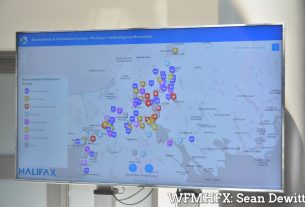**** Info via Environment Canada
“Triple-dip” La Niña
According to the World Meteorological Organization (WMO), it is likely that the current La Niña event will last until at least the end of the year, becoming this century’s first triple-dip La Niña, spanning three consecutive northern hemisphere winters.
The WMO predicts the continuation of the current La Niña over the next six months, with a 70% chance in September-November 2022, but gradually decreasing to 55% in December-February 2022/2023. It started in September 2020.
La Niña conditions in the tropical Pacific have strengthened as trade winds intensified during mid-July to mid-August 2022, affecting temperature and precipitation patterns and worsening drought and flooding in different parts of the world.
What is La Niña
La Niña refers to the large-scale cooling of the ocean surface temperatures in the central and eastern equatorial Pacific Ocean, coupled with changes in the tropical atmospheric circulation, namely winds, pressure and rainfall. It usually has the opposite impacts on weather and climate as El Niño, which is the warm phase of the so-called El Niño Southern Oscillation (ENSO).
The first figure shows the cross-section in the tropical Pacific during normal conditions, and the second figure shows it during La Niña conditions. In a La Niña scenario, the trade winds are much stronger than usual and are pushing the warm water towards Indonesia increasing the upwelling of colder water near the coast of South America.
However, all naturally occurring climate events now take place in the context of human-induced climate change, which is increasing global temperatures, exacerbating extreme weather and climate, and impacting seasonal rainfall and temperature patterns.
What does
it mean for Canada?
The good news is that although the “triple-dip” event is interesting, La Niña doesn’t have much influence over fall weather patterns in Canada. However, if it persists throughout winter, this can mean a cooler winter for western Canada.
Temperature forecast for September, October and November 2022. Shades of blue indicate colder temperatures than normal. Shades from yellow-orange-red indicate warmer temperatures than normal.




